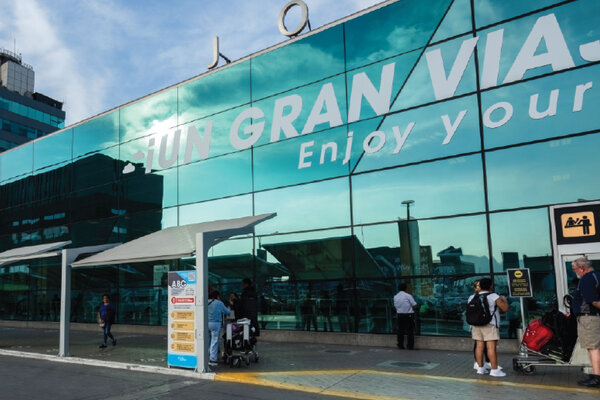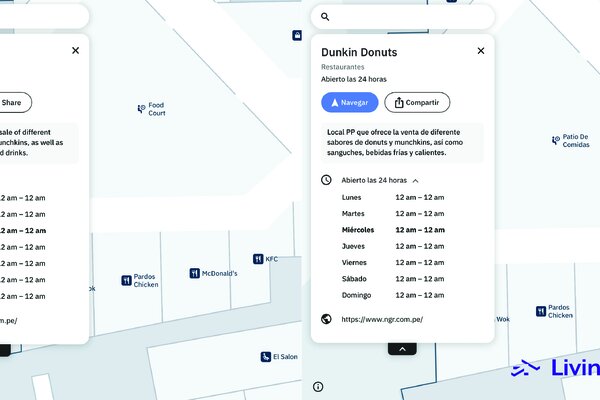Assistance for Disabled Air Passenger Travel (ADAPT)

As the various stories of our global pandemic emerge, be they heart-rending, inspiring, touching, fascinating, demoralizing or uplifting; one common observation is that of a newfound reluctance for physical proximity to other people. This reluctance may be especially profound for those with mobility, visual, or cognitive impairments. Living Map, Grid Smarter Cities, and Open Inclusion have undertaken research to directly address this challenge.
Background
In early 2018, a consortium of tech companies and consultancies led by Grid Smarter Cities and Living Map was awarded an Innovate UK grant to create a solution for airport accessibility issues faced by the UK’s 13.3 million people with disabilities.
Passengers with Specific Access Needs (PSANs) face many barriers to air travel including poor accessibility and services information, a 48-hour minimum advance assistance booking requirement, assistance failures and lack of onward transport integration. Terminals are often difficult to navigate, information regarding accessibility is hard to find, outdated or not available at all, and communication with support staff can be more challenging than it should be.
One in five PSANs report difficulties in accessing transportation (ONS, 2011) and PSANs make 38% fewer trips compared to people without mobility difficulties (National Travel Survey 2015).
“The trouble is many disabled people lack confidence – but if this App was properly developed it could be such a boon.”
The ADAPT project set out to explore how technology can improve PSANs experience, delivering ‘end-to-end’ connectivity across transport modes, assistance and reassurance through a single user-driven mobile device, allowing airports and airlines to track passengers and requirements. The team specifically focused on exploring the efficacy of two capabilities:
- A tool empowering PSANs to self-navigate with a high level of information and accuracy;
- A way to communicate with support staff based on current location and specific needs when help is required.
The prototype that resulted from this study combines Grid Smarter Cities comprehensive assistance to disabled users on the go “assist-Mi” and Living Map intuitive, interactive map-based routing and location technology.
Features
- Accurate indoor location positioning;
- Accessible routing inside the terminal including time-to-destination estimates;
- Real-time two-way chat to request assistance at any point during the journey;
- Share relevant personal details with airport staff;
- Share the user’s location with the support staff when requested.
Benefits
- Better accessibility: The prototype results in significantly more accurate information about accessible routes and airport amenities.
- Autonomy: PSANs make significantly fewer purchases from airport concessions and retail as compared with other passengers. This indicates a lack of access and confidence that destinations are reachable, which can be addressed with the ADAPT tool-set.
- Improve communications: Real-time mobile-based communication based on location and need is a significant improvement to current PSAN assistance protocol.
- Increase efficiency: Empowering PSANs to self-navigate when desired will result in a reduced reliance on support staff.
- Foster independence: In many cases, individuals who are otherwise capable and independent require assistance from staff simply due to lack of accessibility information.
“I really liked the search function and guidance function. I would definitely use these when travelling through Heathrow to find cafes, toilets and check-in.”
Outcomes
The initial survey, final user testing, and focus group work have been completed by the project research partner Open Inclusion.
The final user testing was done with 16 journey testers with access needs made up of 11 women and five men aged 22 to 70 years old with a wide range of access needs (mobility, dexterity, vision, hearing, cognitive, fluctuation, and mental health). Nine of the participants were accompanied while seven were self-journeying.
Amongst the key findings, we can identify 4 positive outcomes:
- Significant app potential: All 16 participants and all 3 staff members involved felt the app showed significant potential to improve assistance service at the airport.
- Measurable effect on scores like NPS: The Net Promoter Score (NPS) question ‘Would you recommend the assistance service at Heathrow’ rose from -32.6 (prior to using the app) to 6.3 (after using the app). Similar increases were observed in measures of “How easy is it to get around Heathrow” and “How safe did you feel at Heathrow.”
- Favourite feature: Requesting assistance from anywhere within the Heathrow terminals was the favourite feature of the app, and was described by trial participants as a “game-changer.”
- Strong potential of maps: Both participants and Omniserv staff acknowledged the in-app map (including routing functionality) had strong potential to improve navigation, increase findability between staff and passenger, and generally reduce anxiety at Heathrow.
“Requesting assistance from anywhere in the airport is a game-changer.”
Request a demo
Experience the power of our mapping, wayfinding, and navigation technology for yourself. See how our software can enhance the customer experience in your facility.






